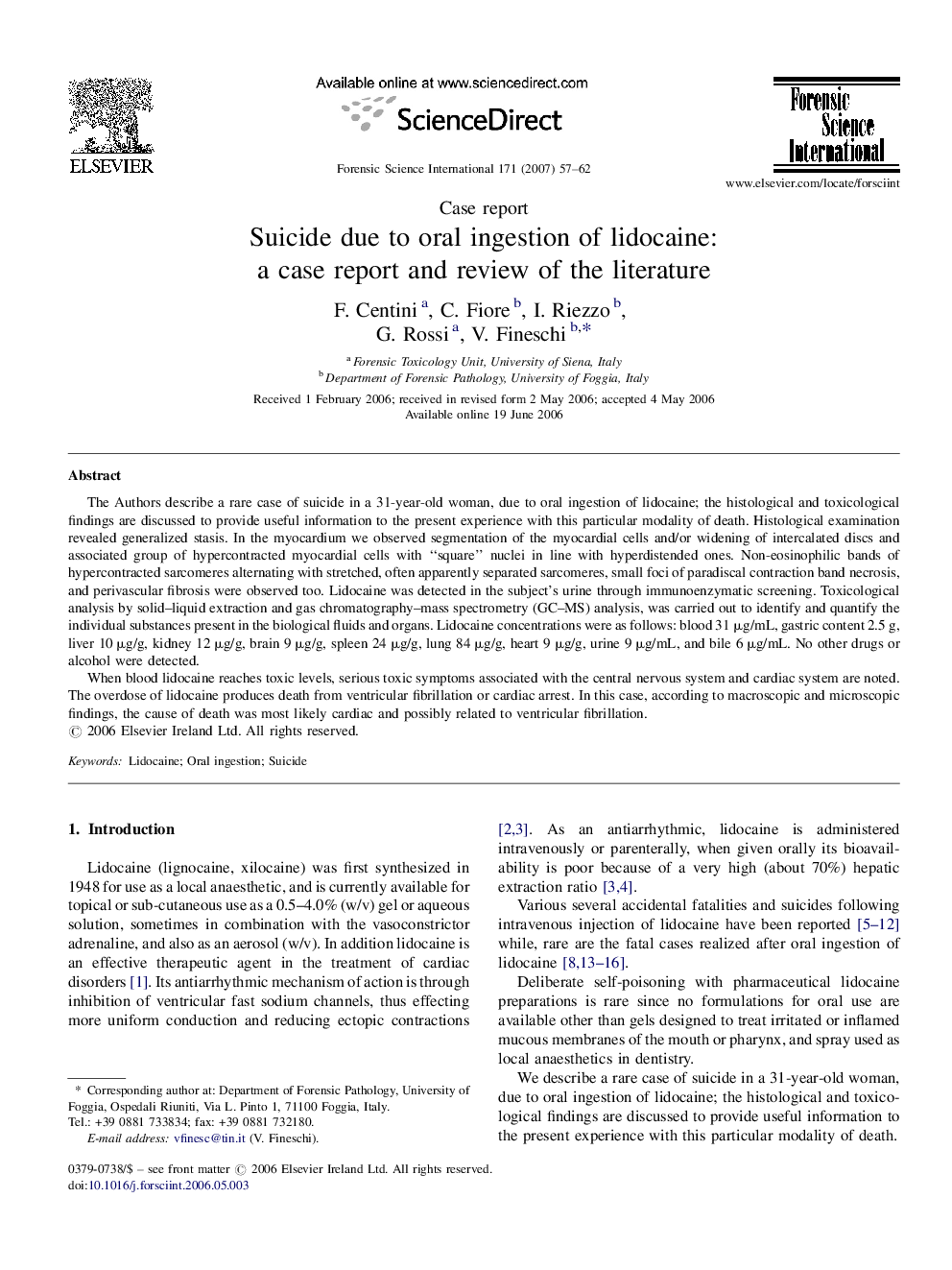| Article ID | Journal | Published Year | Pages | File Type |
|---|---|---|---|---|
| 98056 | Forensic Science International | 2007 | 6 Pages |
The Authors describe a rare case of suicide in a 31-year-old woman, due to oral ingestion of lidocaine; the histological and toxicological findings are discussed to provide useful information to the present experience with this particular modality of death. Histological examination revealed generalized stasis. In the myocardium we observed segmentation of the myocardial cells and/or widening of intercalated discs and associated group of hypercontracted myocardial cells with “square” nuclei in line with hyperdistended ones. Non-eosinophilic bands of hypercontracted sarcomeres alternating with stretched, often apparently separated sarcomeres, small foci of paradiscal contraction band necrosis, and perivascular fibrosis were observed too. Lidocaine was detected in the subject's urine through immunoenzymatic screening. Toxicological analysis by solid–liquid extraction and gas chromatography–mass spectrometry (GC–MS) analysis, was carried out to identify and quantify the individual substances present in the biological fluids and organs. Lidocaine concentrations were as follows: blood 31 μg/mL, gastric content 2.5 g, liver 10 μg/g, kidney 12 μg/g, brain 9 μg/g, spleen 24 μg/g, lung 84 μg/g, heart 9 μg/g, urine 9 μg/mL, and bile 6 μg/mL. No other drugs or alcohol were detected.When blood lidocaine reaches toxic levels, serious toxic symptoms associated with the central nervous system and cardiac system are noted. The overdose of lidocaine produces death from ventricular fibrillation or cardiac arrest. In this case, according to macroscopic and microscopic findings, the cause of death was most likely cardiac and possibly related to ventricular fibrillation.
